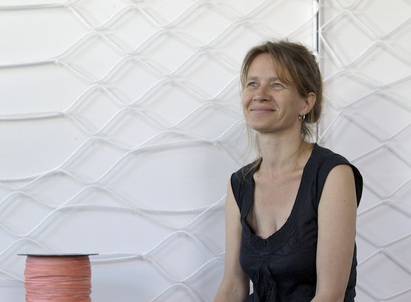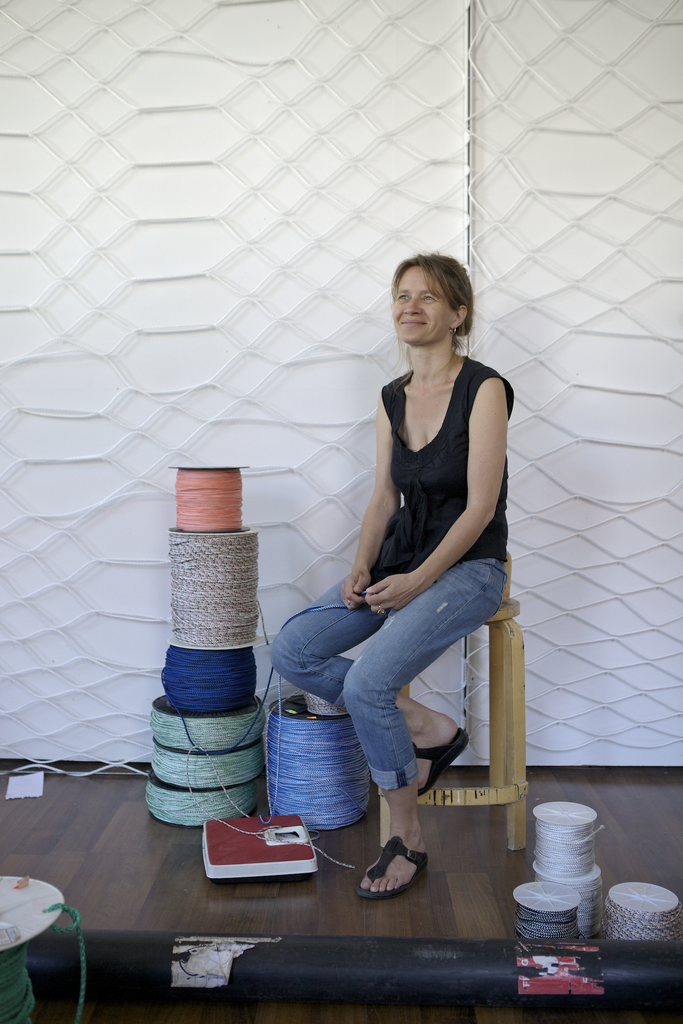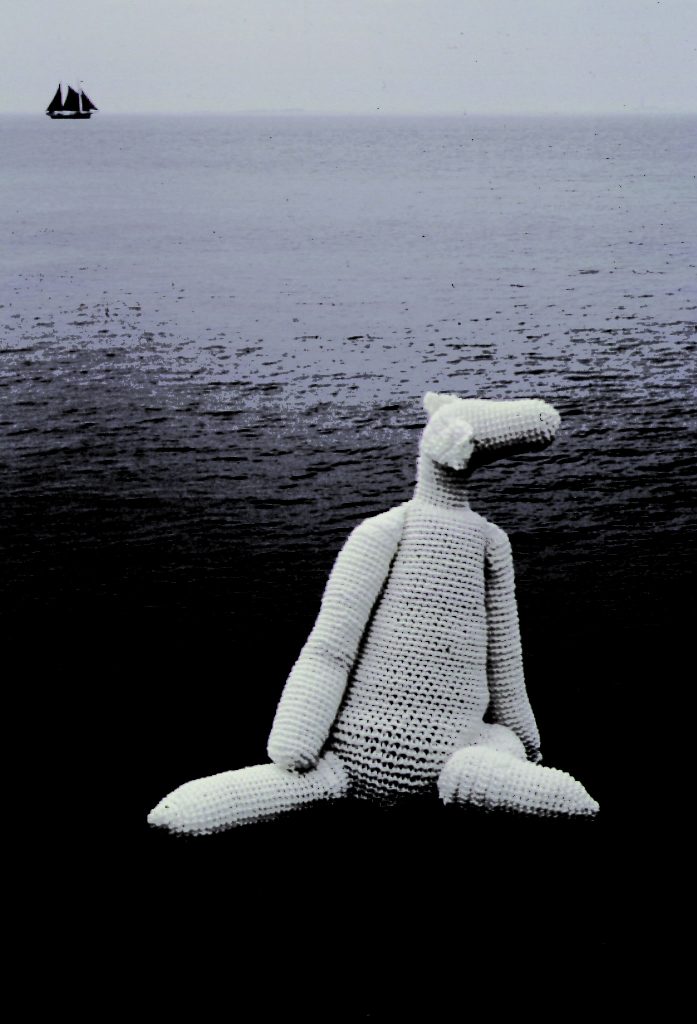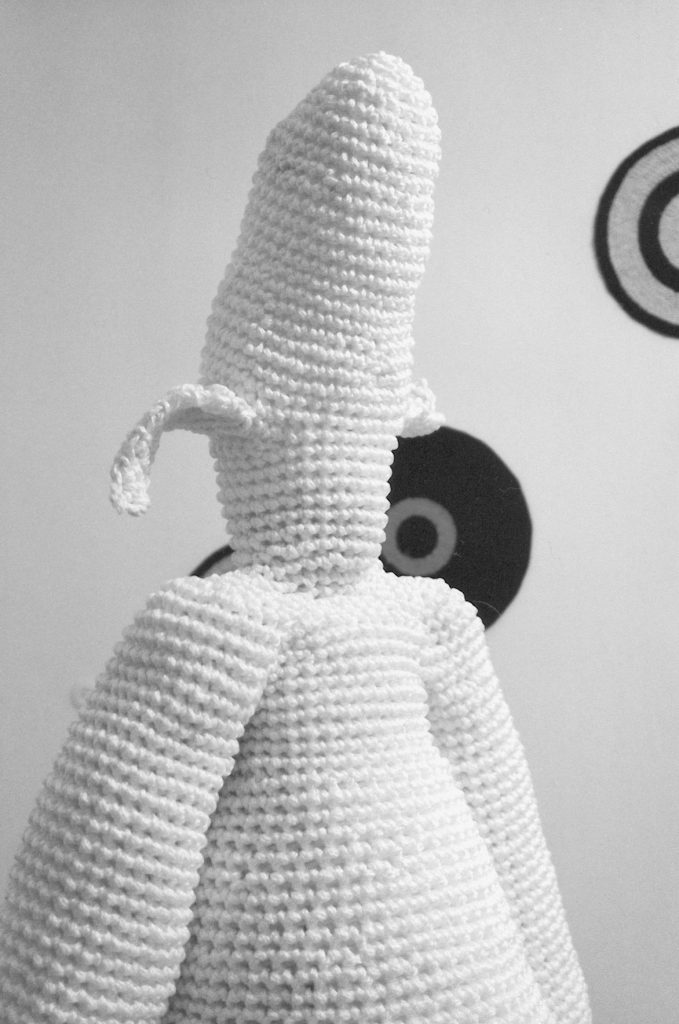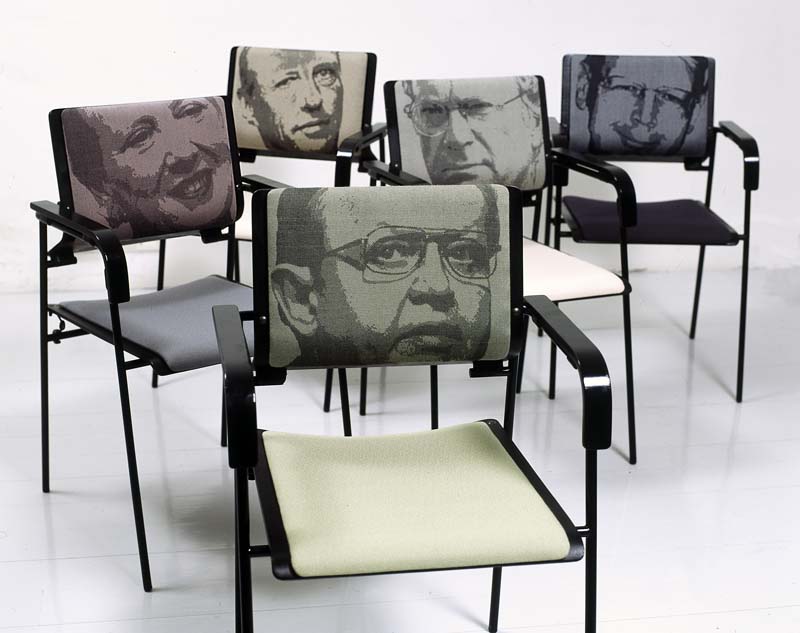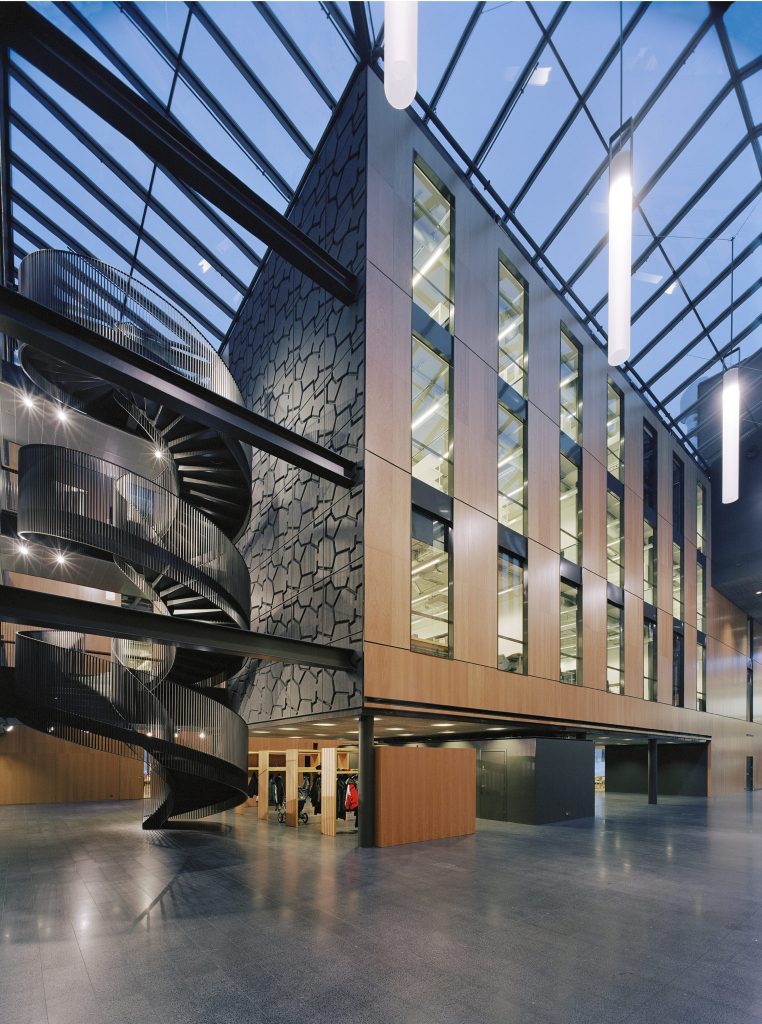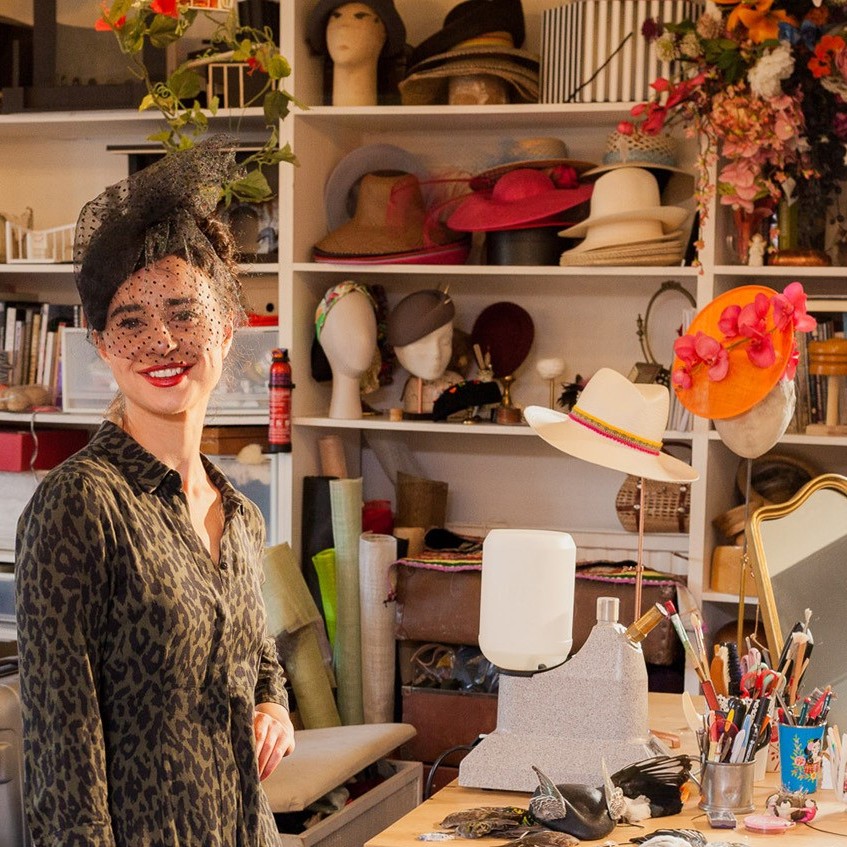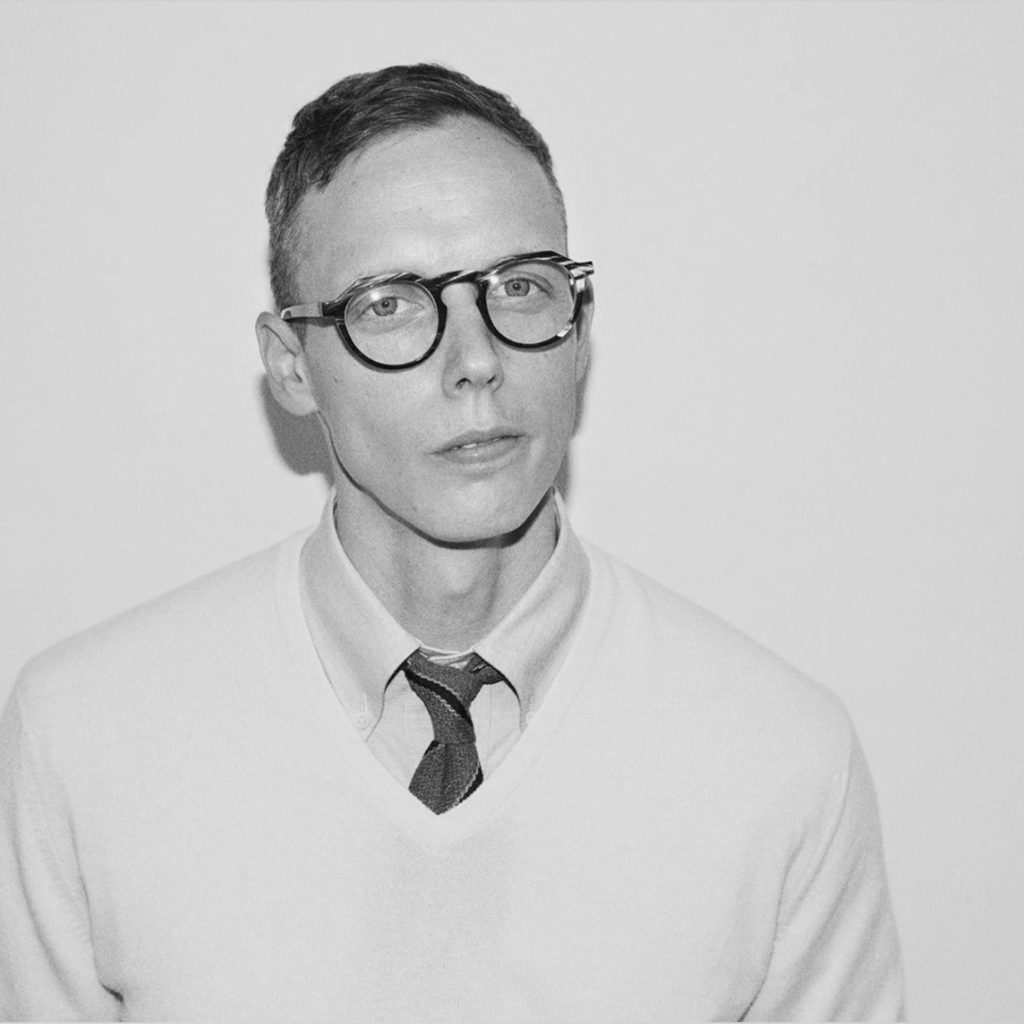Outi Martikainen Textile Artist - Finland
Your work has changed greatly since you completed Textile Art and Design in 1999. Can you point out several of the milestones?
The whole way through my early works shown in public until to recently have been digital weavings, purely working and experimenting with different materials and bringing some of the fine structures of textiles to different rooms and locations. I have had a privilege to work in different scales and materials so there has been a lot for me to examine and learn as well.
In my final thesis to UIAH, University of Arts and Design Helsinki, I became aware of digital jacquard weaving as an extensive tool for a textile artist.
Discuss ‘Frozen 1’ from 1999?
Sculptures Frozen I and Frozen II, I made just that I wanted to have a big and rough surface resembling ice and snow. Out from the two dimensional form. I stayed that time on an island off Helsinki. During a great old time winters in Helsinki material and on the island I examined snow with my senses. Icings on a tree, on old fortress or going shopping to islands only shop with a kick sled.
Frozen I, 150 x 110 cm, Material polypropylene cord, Technique crochet, Photo Teemu Lehto
Frozen I, I eventually made for on exhibition on the island. Joining an international group of artists, I represented as a young Finnish textile artist and had the great joy of working with crocheted cord.

These two characters got their form by crocheting and having in mind the summer days and sun bathing people who fill up the island at summers while long winters the island stands silent.
I choose polypropylene cord for material because on the island. I found that white ropes which were hung outside for to hang laundry to dry resembles snow, it’s white only when it gathers with other flakes and on the other hand it’s transparent like ice. There was a good supply of ropes in the shop on the island which is natural because I’ve learnt later that the wind eats the ropes on islands. I also needed a special hook for crochet because the cord was 1 cm thick.
the sculptures had inflated cushions inside and the crochet was done around cushions. That way they looked more icy. Also it was possible to empty the sculpture to put it into a box.
Frozen II, Detail, 170 x 120 cm, Material polypropylene cord, Technique crochet Photo Teemu Lehto
Compare Frozen 1 with Frozen 11 and what you have learnt that makes them similar but different?
My meaning was to have both the sculptures exhibited on one of small islets on the way to Suomenlinna island like environmental art, so that they could be seen from the ferry to island, but the first one was sold to an Italian gallery and it was shown in Milan instead.
While I was crocheting the second one it was asked for an occasion with Emilio Pucci in Italy too and it stayed there. They were my first international output and I now to see then as quite a milestone or two.
By 2004 you had started to introduce weaving into your work. Discuss your work ‘Daily Bread’ and the use of ‘modern weaving and materials.
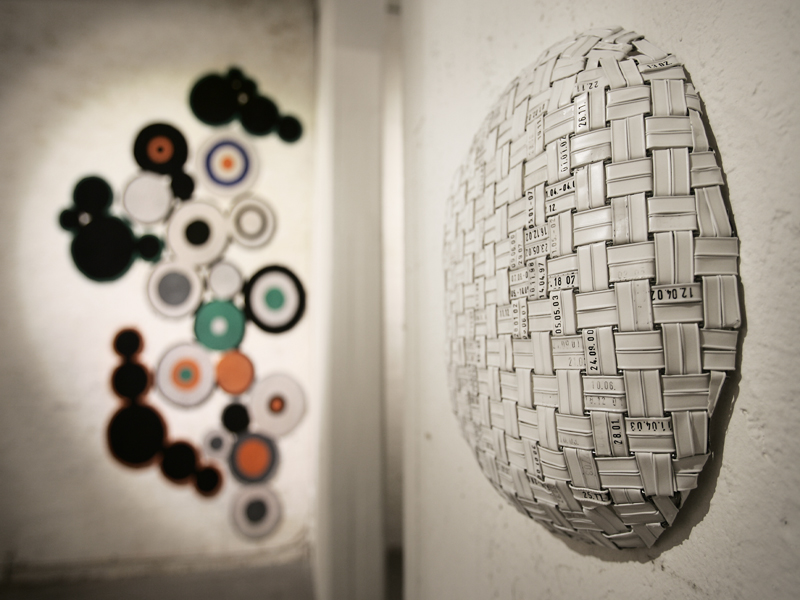
Daily Bread, 300 x 300 cm, Twist Ties from Bread Bags, Photo Laura Vesa
‘Daily Bread’ is made by braiding bread bag fasteners into an industrial metal net. With that work I started a collective action and from here and there were coming small bags filled with different amounts of fasteners. I had shut up bread bag fasteners because there was a good design on that daily detail and it was interesting enough. Other people like my friends and their friends and workmates had found that same. I do not know how it was such common idea suddenly I started to be the ‘mother of this business of working with bread bag fasteners’ and I felt that somehow I was obliged even to produce new works, and I do still make now and then a new piece for to supply the market. I hardly ever have sold a one of those collective accumulated bread bag fastener art piece, so I think they do live their own lives in exhibition and after in my studio.
There were other materials like detergent bottles which I also found interesting. While my kids were small I spent quite a lot of time in the kitchen, mean while still studying in the University, I had the time to noticed that there were many good materials going into the rubbish that I could use in my working.
For a mould or form and starting point, I used my grandmother’s breadbasket. All dates in Finnish history refer to an eating of bread.
My basket out of bread bag fasteners is emphasizing the traditional birch bark handcrafted domestic objects. Finns have had a great affinity with birches. It has substituted leather in early days, brought warmth and with a bunch of branches of birch we have refreshed our bodies in the sauna. Modernism comes from it’s white – black surface.
Discuss your Jacquard Weaving for the NIFCA contemporary art chairs.
Who’s faces are they?
Why were these people chosen?
What were their thoughts on being placed on the back of a chair?
For the final thesis to UIAH I had a possibility to work with another institution and applied art school Wetterhoff where there was the first digital jacquard weaving looms TC-1 in Finland, jacquard looms that are manufactured in Norway. I was so hooked immediately. I found out that this is weaving with a totally new level. My university got a TC-1 later when I had already graduated. So this was kind of milestone too.
Images for the meeting room chairs in Nordic Institution for Contemporary Art I took from newspaper images of presidents, kings and a queen to represent the five Nordic countries.
Images are reminiscence of heroic and institutional tapestries. The multitude of faces of people was expressed with excellent woven material with the quality to be used on public places. We are the public. I enjoyed while there was not much more accent in the room and it never looked empty while these faces stayed in the room.
Photo Juha Reunanen
You are currently working with the technique of weaving with a digital loom can you explain this technique?
Digital weaving offers a way to work with different scales and materials in a weaving form. After graduating and intense working in co-operation in architecture specially with SARC architects I further studied jacquard by weaving workshop working around Baltic and Norway. For the past few years I have experimented with my own TC-1 looms with materials and structures. It is not anymore the looms which limit me but creativity like I felt when studying weaving at the Vihti School of Applied Arts. Now I enjoy working with images filling them with weave structures and just go on to the looms and weave.
TC-1 looms reads digital information and with pressed air lifts heddles according a digital image from a digital row to another digital row. The joy of weaving is still left for a weaver.
Your current work is coloured very subtle, expand on your choice of colours now?
Heavenly Dreaming, 145 x 165 cm, Photo Katja Hagelstam
Another milestone in the sense of material is that I found that by designing the material myself. I can get the colour palette into my weavings to express for example the old traditional Finnish rag rug domestic weaving and their subtle faded colours. In these rugs they used to use all that textile material found in the house which was not anymore enough valid for clothing. I try to imitate and transform the beauty of old rag rugs. Instead of rags I use braided cords from synthetic waste material from weaving companies up north-west Finland where there still is a lot of small weaving industry. Because in my weavings I want to enlarge weave structures to emphasize their graphical structure I have created a material that I can vary with different weave structures. A ready colour may consist of 36 different multifilament yarns. On weaving, I then combine these to create new colours on the weaved surface.
Many of your pieces are related to childhood, can you discuss this in relations to ‘The Girl Growing and your exhibition ‘Paradise Tramps’ and the connection with the children’s author Astrid Lindgren?
Series of images where Knight of the Teeter, is a part of a solo exhibition, Paradise Tramps, in Middle -Finland Museum in Jyväskylä, my hometown 2015.
The Knight of the Teeter, 146 x 195 cm, Photo Katja Hagelstam
Paradise Tramp was a character, actually a whole concept of being in the world, which I found in one of Astrid Lindgren’s books. Astrid Lindgren illustrates in many of her books, a world where there is a great respect for life in all forms, especially for children. Later when reading and understanding more of the period of time she wrote the stories I admired her strong commitment to devote her life writing books to her big audience of children in various times. Paradise Yramp was a fellow, a guy who represent a person without a permanent resident, moving by foot, and to face others strong prejudice. In the works of this exhibition and considering The Knight of the Teeter I illustrate an act where a tramp met an orphan child who asked a tramp of his occupation. The tramp visualizes his being to a child to be a task given to him, that somebody have to do that work too, admiring the world.
Children have their life to be just like the tramp and we have to face the fact that from the birth they are already going away from us. In images I have taken of children and then transformed into weavings I see a little glimpses of absence which I understand to be an instinct of being an individual which we should respect and give a shelter to grow. I wove the images big because I found that important and also to give room for colours and weaves to be seen well. Woven structures are of great beauty.
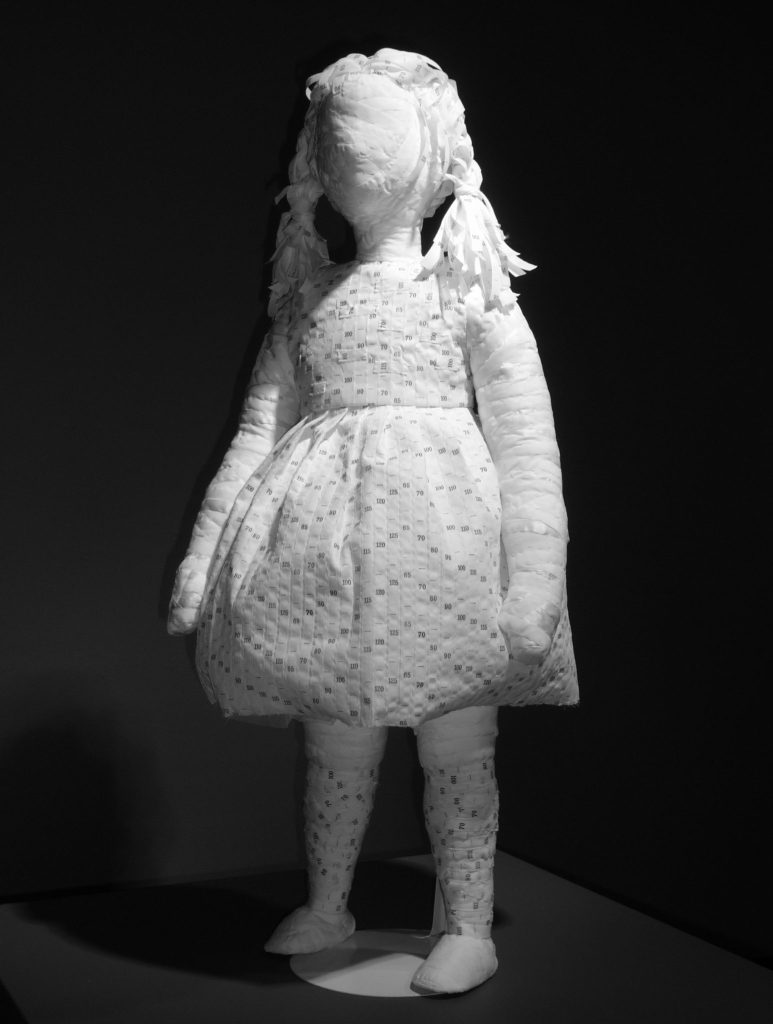 The Girl is Growing, 80 x 30 cm
The Girl is Growing, 80 x 30 cm
The girl is Growing is a work which still hurts because it’s a work that raised from my own fears of an ability to give enough respect and protection to my own girls while they are finding their own personality. This work is executed by sewing size labels on a textile sculpture.
Discuss size and its influence on your work (Frostscape)
For me landscapes are a great place to feel scenography with varying different light. In Frostscape I visualize a winter scenery with frost and cold when there are no colours in nature but light. In one of my co-operations in architecture I had a big wall to cover with something soft, at Oulu University. I found a heat mouldable polyester felt to fill the demands. Earlier I had started to work with the felt itself before moulding. I needle felt synthetic material on felt by hand first, I turned the felt and used the reverse side to get the frozen image.
Frostscape, 340 x 340 cm, Needle felt, heat moulded Ployester, Photo Pete Huggins
Your architectural work is huge explain how this is done and the restrictions you have had to deal with?
My co-operation in architecture started after a study project in UIAH textile design department.
I was picked up while there was going on a project in SARC architects Ltd. for a Finnish pavilion in Expo 2000 World Exhibition in Hannover. In my project I have introduced silkscreen printed glass and it was in a way right timing. This was one of those milestones on my career. When graduating there was a deep depression in Finnish textile industry and most of it was disappeared to Estonia and China. When asked to design a pattern for the face of a house I did not find it very different that designing a pattern for a textile. The size of the house was just some extra to get, the challenge was to make a good repeat in pattern. Actually there were many other interesting things and challenges which have interested me already while studying like light and transparency.
 Faculty of Medicine, University of Oulu, Acoustic Panel, 150 x 150 cm, Photo Teemu Letto
Faculty of Medicine, University of Oulu, Acoustic Panel, 150 x 150 cm, Photo Teemu Letto
I have worked in several architectural projects and each of them have they own restrictions. The work is highly co-operation which is good change as it is so different to working alone in studio. Discussions and technical demands are the boundaries which in the best case is finally leads the project on a result that it is the best we can do for that time and place. My task is to create something that is closely attached to the parameters of the house and accenting the appearance of the building.
Faculty of Medicine, University of Oulu, Acoustic Panel, 150 x 150 cm, Photo Jussi Tiaimer
Discuss your work Siiri from ‘close up’ to ‘from a distance’.
The happy smiling face of a woman, Siiri, is my Grandmother. She represents the last generation of domestic textile culture, when the major part of garments and home textiles where home done. My grandmother used to sew every summer a new summer outfit to me and my sister. It was a very common thing to know how to crochet and granny and her friends for example crocheted large bed covers from a load of small pieces; so that each of them had a one. They shared the pieces and helped each other. I think this was something ‘their own room’ -thing.
The work of Siiri is crocheted the same way from a lot of pieces using a great pixel size. From near the surface it is abstract from a distance the image gets clearer revealing the face. My idea was to have it possible to install it outside in a facade as well. It is in three pieces the tight crocheted polypropylene cord supports itself. Here we can see what working with architecture lead to.
Siiri, 350 x 350 cm, Crochet, Photo Marte Aas
Contemporary textiles are still outsiders in the fine art world, slowly they are gaining recognition in Fine Art Galleries. Discuss how this is happening in Finland.
I have worked solving functional issues and on the other hand combining material and textile techniques freely. Sometimes it’s problem which runs ahead, sometimes it can be the use of an interesting material. I now have ability to weave, I do see that works done before are weaved too. With modern tools or abstract of weaving.
All my working is to push great textile techniques in life and bring them to a same consideration as a paint in painting or whatever other medium or other forms of art. What is art or not is not the big issue anymore; I think it is the matter of what it does. My working could do maybe the same as Astrid Lindgren’s books gave me as a child, a glimpse of a life of a paradise tramp.
Contact details.
Outi Martikainen
outi@outi.info
Outi Martikainen, Finland
Interview by Deborah Blakeley, April, 2016
Think a colleague or friend could benefit from this interview?
Knowledge is one of the biggest assets in any business. So why not forward this on to your friends and colleagues so they too can start taking advantage of the insightful information the artist has given?
Other artists you may be interested in:


